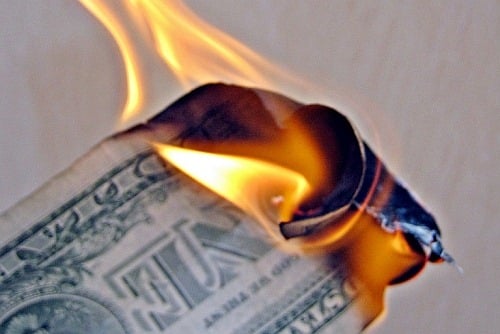Does your team get the cost of a ‘Do-Over’?
A “Do-Over” takes on many shapes and forms in business; warranty work, improper billing, improper invoicing, arriving at the wrong address for an appointment, shipping to the wrong address, wasted materials…you get the picture. Unfortunately as a business owner (especially with employees) the opportunities to excel in this expensive and unwanted category are almost endless.
Obviously the goal of every business is to shrink this category to a level of irrelevancy. That’s why you focus on building good systems and procedures with appropriate checks and balances so errors are reduced before they ever happen. These are critical and costly issues and if you don’t get a handle on them, they can drive you out of business.
But if you have employees, how do you get them to understand how to value a mistake that cost the business $50, $500, or $5,000 or even more? It isn’t their money and often it’s hard to make it seem real (although it’s definitely real to you as the owner). Even if your business has a strong profit sharing program most employees don’t easily connect the link of the cost of a mistake to less money in their pocket. The larger the business, the harder it can be for a single employee to quantify how his/her “Do-Over” is making much of a negative impact on the overall business.
One simple technique that can be very effective is to use a visual of money burning. Everyone values cash and the thought of it burning creates a clear picture you have entered a point of no return as far as every being able to use it again. You can use this technique individually when a “Do-Over” happens or cumulatively if you are effectively tracking this as a line item in your business. The idea is to visually paint a picture of real money going up in smoke.
Try This:
The next time a significant, preventable, “Do-Over” occurs with an individual, on a project, or within a department of your business consider this approach. In addition to reviewing your policy and procedures that allowed the mistake to happen in the first place, gather everyone involved together and explain what just happened was the equivalent to taking that same amount of $1 bills ($1 bills create a bigger pile) piling them up in the middle of room, (yard/street, etc) and burning them. Let them know, no matter how hard we work that money is gone forever. If you can get them to visualize the mistake as real money and not just a number on a spreadsheet, you will create a connection that will resonate deeper.
We would love to hear your thoughts on this topic. Share them in the comments below.
Chris Steinlage Kansas Business Coach
Photo by Images_of_money

